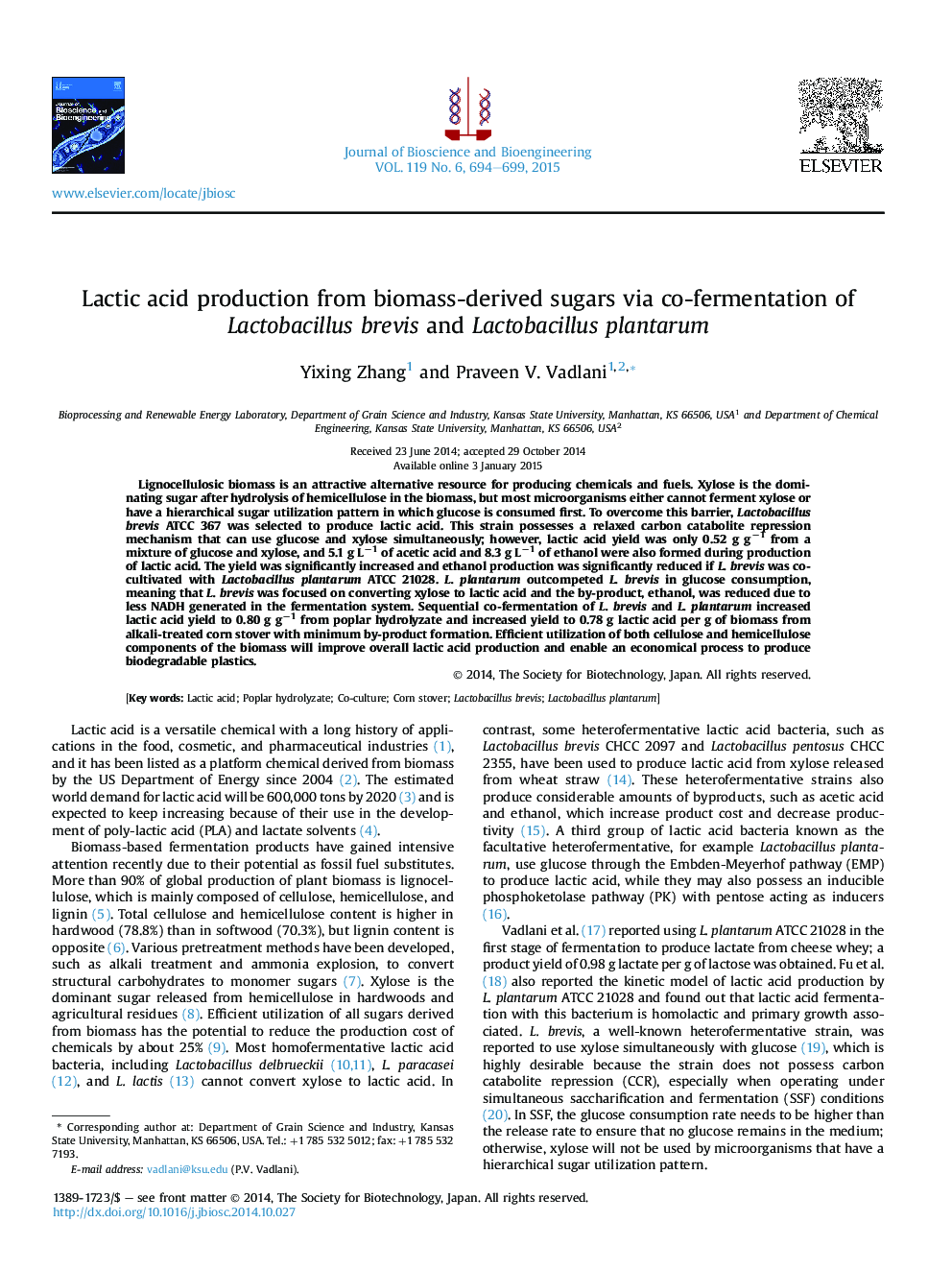| کد مقاله | کد نشریه | سال انتشار | مقاله انگلیسی | نسخه تمام متن |
|---|---|---|---|---|
| 20333 | 43169 | 2015 | 6 صفحه PDF | دانلود رایگان |

• Complete utilization of hexose and pentose sugars from different biomass.
• Lactic acid production was enhanced with co-culture fermentation.
• Significant by-products reduction (63%) was achieved by co-cultivation.
• Lactic acid productivity was increased when operating under SSF process.
• The novel co-culture fermentation system has enormous potential for scalability.
Lignocellulosic biomass is an attractive alternative resource for producing chemicals and fuels. Xylose is the dominating sugar after hydrolysis of hemicellulose in the biomass, but most microorganisms either cannot ferment xylose or have a hierarchical sugar utilization pattern in which glucose is consumed first. To overcome this barrier, Lactobacillus brevis ATCC 367 was selected to produce lactic acid. This strain possesses a relaxed carbon catabolite repression mechanism that can use glucose and xylose simultaneously; however, lactic acid yield was only 0.52 g g−1 from a mixture of glucose and xylose, and 5.1 g L−1 of acetic acid and 8.3 g L−1 of ethanol were also formed during production of lactic acid. The yield was significantly increased and ethanol production was significantly reduced if L. brevis was co-cultivated with Lactobacillus plantarum ATCC 21028. L. plantarum outcompeted L. brevis in glucose consumption, meaning that L. brevis was focused on converting xylose to lactic acid and the by-product, ethanol, was reduced due to less NADH generated in the fermentation system. Sequential co-fermentation of L. brevis and L. plantarum increased lactic acid yield to 0.80 g g−1 from poplar hydrolyzate and increased yield to 0.78 g lactic acid per g of biomass from alkali-treated corn stover with minimum by-product formation. Efficient utilization of both cellulose and hemicellulose components of the biomass will improve overall lactic acid production and enable an economical process to produce biodegradable plastics.
Journal: Journal of Bioscience and Bioengineering - Volume 119, Issue 6, June 2015, Pages 694–699